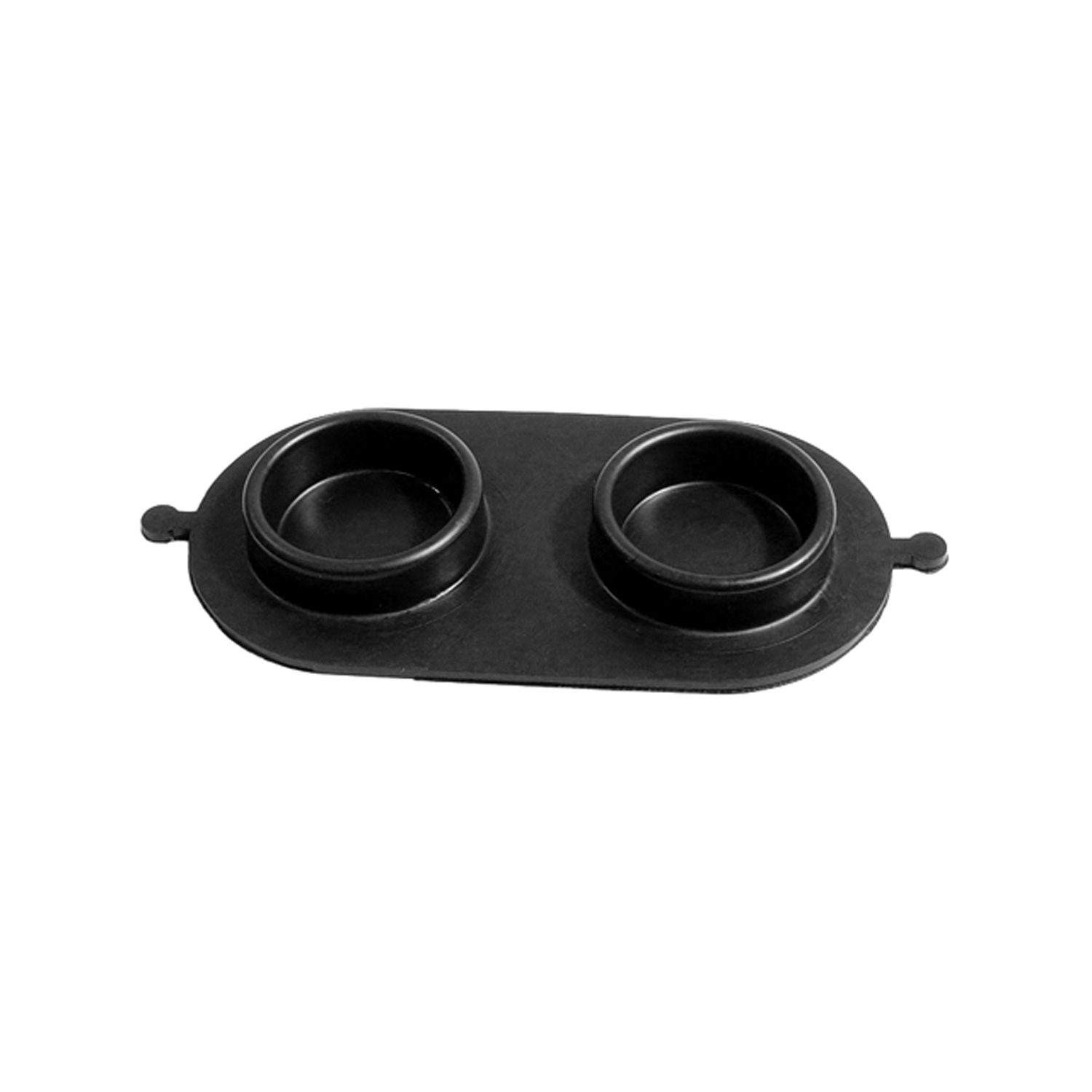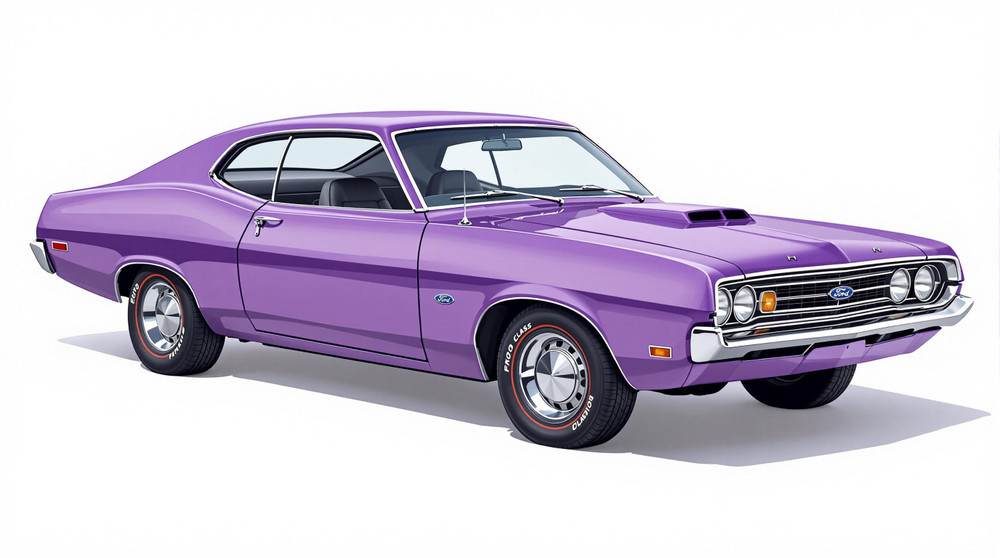Image of 1972 Ford Pinto, Note: These illustrations use artistic license and may differ from actual historical models.
Performance Metrics
Fundamental Metrics
Emotional Appeal
MMP Rating
| Engine Specifications | |
|---|---|
| Engine: | 1.6L Kent OHV I4, 2.0L EAO SOHC I4, 2.3L OHC I4 |
| Displacement: | 98 cu in (1.6 L) to 140 cu in (2.3 L) |
| Horsepower: | 54-88 hp |
| Torque: | 74-118 lb-ft |
| Compression Ratio: | 8.2:1 - 9.0:1 |
| Ignition System: | Conventional, with distributor |
| Cooling System: | Liquid-cooled |
| Performance Specifications | |
| 0-60 Time: | 10-14 seconds |
| 1/4 Mile Time: | 17-20 seconds |
| Top Speed: | 100 mph |
| Transmission and Drive | |
| Drive Type: | RWD (Rear Wheel Drive) |
| Transmission Type: | 4-speed manual, 3-speed automatic |
| Fuel and Efficiency | |
| Fuel System Type: | Carburetor |
| MPG: | 20-25 mpg |
| Dimensions and Brakes | |
| Brakes: | Front disc, rear drum |
| Wheelbase: | 94.0 in |
| Weight: | 2,015-2,270 lbs |
Note: Specifications for classic cars are given to the best of our ability, considering the limited and variant data available.
1972 Ford Pinto: A Compact Contender with a Story
When the 1972 Ford Pinto rolled off the production line, it was more than just a car; it became a cultural icon of the 70s. Born out of the need for American automakers to compete with the influx of fuel-efficient Japanese cars, the Pinto was Ford's answer to an evolving marketplace. This subcompact vehicle, conceived by Lee Iacocca and designed by Robert Eidschun, was manufactured to meet the demands of consumers during a time when gas prices were beginning to climb and smaller cars were becoming more desirable.
Notably, the Pinto's history is intertwined with controversy, which ultimately led to its infamy. Despite this, it remains an interesting chapter in automotive history, offering a glimpse into a period of significant change in the industry.
Design and Innovation
The 1972 Ford Pinto's exterior styling was distinctive for its time, featuring a long hood and short rear deck—a design ethos that echoed the classic pony car look in a smaller package. The interior was modest yet functional, with materials that reflected its economy-class positioning. While not luxurious, it offered a straightforward and user-friendly layout.
Technologically, the Pinto was not particularly groundbreaking, but it did offer features like rack-and-pinion steering that were innovative for an American subcompact. Color options ranged from vibrant hues like "Bright Lime" and "Grabber Blue" to more subdued tones such as "Pewter Metallic," with brighter colors often catching the eye of younger buyers.
Body styles included a two-door sedan, a three-door hatchback, and a two-door station wagon. The hatchback emerged as an especially popular choice due to its practicality and sporty appearance.
Historical Significance
The 1972 Ford Pinto played a pivotal role in shifting American car manufacturers' focus towards smaller, more fuel-efficient vehicles. It set the stage for future innovation in compact car design and influenced the development of subsequent models that prioritized economy without sacrificing style.
Performance and Handling
The base model's performance was modest, with engines ranging from a 1.6-liter inline-four to a 2.0-liter option. The top speed and acceleration were adequate for daily commuting but not particularly impressive by today's standards. However, for those seeking more zest, there was an optional 2.8-liter V6 that provided better performance figures.
In terms of handling, the Pinto was competent for its class. It managed bumps reasonably well for a small car and could handle windy roads with relative ease. The driving experience was characterized by the distinct hum of its small engine and the simple pleasure of driving something that felt very much like a product of its time.
Ownership Experience
The Pinto found its place as a daily driver for many Americans and occasionally as an entry-level show car or grassroots racer. Its maintenance and reliability were typical for the era—simple enough for home mechanics to tackle but not without its quirks.
Fun Facts
The Pinto has been part of various pop culture references and even owned by celebrities. Although it never set any significant speed or sales records, it did become notorious due to safety concerns which led to recalls and lawsuits—issues that overshadowed its positive attributes.
Collector's Information
Today, a well-preserved 1972 Ford Pinto can be quite rare. With production numbers in the hundreds of thousands across all years and models, finding one in excellent condition can be challenging. As for value range, prices can vary widely based on condition and originality; they might range from $5,000 for an average example to over $15,000 for a pristine or uniquely optioned model.
The market trend for the Pinto is somewhat stable; while not appreciating rapidly like some classic muscle cars or exotics, good examples maintain their value among enthusiasts who appreciate their place in automotive history.
Conclusion
The 1972 Ford Pinto is more than just another classic car—it's a story on wheels. Whether remembered fondly or infamously, it remains an important piece of American automotive heritage that continues to captivate collectors and enthusiasts alike.
1972 Ford Pinto Catalog of Parts
 1972 Ford Pinto Brake Master Cylinder Cover Seal. Replaces OEM #C7AZ2167-A-RP 2-BBrake Master Cylinder Cover Seal. Replaces OEM #C7AZ2167-A. Each
1972 Ford Pinto Brake Master Cylinder Cover Seal. Replaces OEM #C7AZ2167-A-RP 2-BBrake Master Cylinder Cover Seal. Replaces OEM #C7AZ2167-A. Each 1972 Ford Pinto Windshield and Rear Windshield Reveal Molding Clip-WF 226Windshield and Rear Windshield Reveal Molding Clip. Made of steel. Each
1972 Ford Pinto Windshield and Rear Windshield Reveal Molding Clip-WF 226Windshield and Rear Windshield Reveal Molding Clip. Made of steel. Each 1972 Ford Pinto Spare Tire Hold Down Nut. 3/8- 16 thread size-WF 3504Spare Tire Hold Down Nut. 3/8- 16 thread size. Replaces OEM #B9AZ-1462-A. Each
1972 Ford Pinto Spare Tire Hold Down Nut. 3/8- 16 thread size-WF 3504Spare Tire Hold Down Nut. 3/8- 16 thread size. Replaces OEM #B9AZ-1462-A. EachWhy Choose Metro?
For over 100 years, Metro Moulded Parts has been the pinnacle of quality in classic car restoration parts. Our commitment to precision and authenticity in every component ensures a perfect fit and an OEM-level appearance.
- Expert Craftsmanship & Quality: Each part is a testament to our dedication to reliability and perfection, crafted from original designs and thoroughly tested.
- Advanced Technology: We use cutting-edge techniques to create flawless, long-lasting parts that surpass others in performance.
- SuperSoft Sponge – The Ultimate Door Seal: Not only are our door seals 30% softer than competitors', but they're also guaranteed to never leak. They effectively reduce wind and road noise, enhancing your classic car's comfort and driving experience.
- Proudly American: Our parts are a product of American craftsmanship, made in the USA with a spirit of excellence and heritage.
- Unrivaled Warranty: We back our products with a 30-year industry-leading warranty, a testament to our confidence in their quality.
Join us in preserving the legacy of classic cars with parts that are crafted for perfection, not just made.

